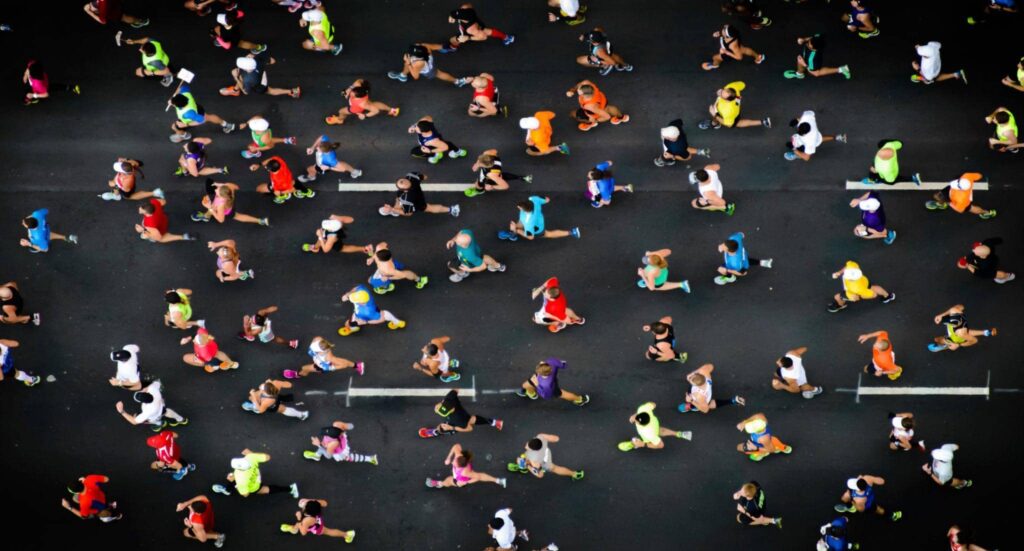
Elite runners are no longer required to run marathons. Walking marathons are becoming more and more popular. It’s a terrific activity for seniors, ex-couch potatoes, and anyone who never considered themselves to be sporty. While marathon walkers encounter some of the same training difficulties as marathon runners, they also confront some particular difficulties. But for those that stick with it, it’s a fantastic sport.
The phrase “marathon” is designed to create fear. Even the best runners need hours to complete the 26.2 mile run. A marathon cannot be completed by simply signing up. To even stand a chance of finishing, you must put in the necessary training. Why then do some individuals find this amusing?
However, there is a growing trend taking place globally that gives more and more people the option to walk rather than run in marathons and other races. Running or even jogging are substantially more stressful than walking.
Even older folks and those who are not initially highly athletic or fit can complete a marathon on foot. And who wouldn’t gain from long-term marathon training’s positive effects on health.
Walking also burns the same amount of calories as running mile for mile. So why aren’t there more people who walk marathons?
First off, not all marathons allow walkers; some tolerate them but do not formally encourage them. Walker-friendly marathons are those that welcome walkers, according to some advertising. (Some of them aren’t!)
How long the track will be open is the main worry for marathon walkers who take part in organized races. A marathon is finished by an elite runner in just over two hours. A marathon may often be completed in four hours by athletes of average ability. Even more sluggish athletes can finish a marathon in five to six hours. (A six-hour marathon time equals 13 minute miles, so it’s not exactly a lightning-fast time!) However, it takes six to eight hours for walkers to finish a marathon. A marathon could be completed on foot in just over six and a half hours if you walked at a steady pace of 15 minutes per mile. When you add in a few restroom breaks, variable performance, or slower walking speeds, you have marathon walkers who clock in at seven or eight hours.
The track is typically open for six hours during marathons. Following that, they start to “sweep” the track, picking up stragglers, the injured, and cleaning up the debris at water stations.
While walkers can initially avoid the sweepers, they will eventually be forced to abandon the track and the marathon before it is complete.
Because the track is wide enough for even slow walkers to finish the race before becoming “swept up,” the Los Angeles Marathon is renowned for being exceptionally hospitable to walkers.
Walkers encounter some of the same training difficulties as runners. Gaining the endurance and skill necessary to run 26.2 miles at once requires months of rigorous training.
The availability of training plans for walkers varies and is not often offered in conjunction with groups training for marathons. When walking programs are offered, there may be a small number of participants and no true walking technique experts.
Additionally, there are specific difficulties for marathon walkers. Even while a really fast elite walker can actually outrun a slow runner, walkers typically spend more time on the track and engage in more intense exercise. They must therefore provide more time, more time for water, and even more time for eating. Marathon walkers frequently carry packets of bars, gels, or fluids with them to consume along the route. Additionally, individuals who can complete the course in less than six or seven hours will need more bathroom breaks than those who can.
The optimal walking training plan incorporates regular training over a period of at least six months prior to the race.
The walker should go outside four times per week for “maintenance walks” that begin at 30 minutes and progressively grow to an hour long. There should be a “long stroll” once every week. The first 15 or 30 minutes can be used; after that, the walker should add 15 minutes weekly until the walk is around 1 hour and 45 minutes long.
In the first several weeks, walkers should focus on developing good form and technique rather than speed or distance. It seems sense to progressively strive to increase speed, but the major priority should be keeping the time.
It’s time to switch to distance after 1 hour and 45 minutes. Long walks are now measured in miles, beginning at 6 miles and increasing by 1 mile every week until they reach 10 or 11 miles.
Marathon walkers should now give way to training guides for marathon runners. The ability to extend the distance by six additional miles is a very important talent for marathon runners to master. This means that the lengthy walk is 10 miles one week and 16 miles the next. The distance increases to 11, then 10, then 11, and finally 17 miles the following week.
This type of pattern develops a crucial marathon skill: the capacity to go six more miles, no matter what.
Once the lengthy walk reaches 20 miles, that is a significant training milestone. Never go on a long walk during a workout that is longer than 20 miles. A marathon walker should have completed at least three 20-mile walks prior to entering a race, though.
Training slows down a few weeks before the actual race. Shorter walks are taken. The “long walks” are now just 10 or 12 miles long, despite the walker continuing to stick to a constant schedule of four hour-long, moderately fast maintenance walks each week.
The novice marathon walker must complete their first 26.2 mile walk on race day. However, he or she has acquired two crucial abilities: the capacity to travel 20 miles with assurance and the capacity to travel six more miles regardless of the circumstances. The final 0.2 miles of the marathon are completed under the influence of adrenaline and crowd noise. A training regimen that corresponds to race day should be drawn up in order to be able to compete in a marathon. Once a marathon walker has completed their training, they can easily adjust their schedule to fit other races throughout the year. In fact, a lot of people get so dependent on marathon walking that they participate in four, five, or more events annually.




